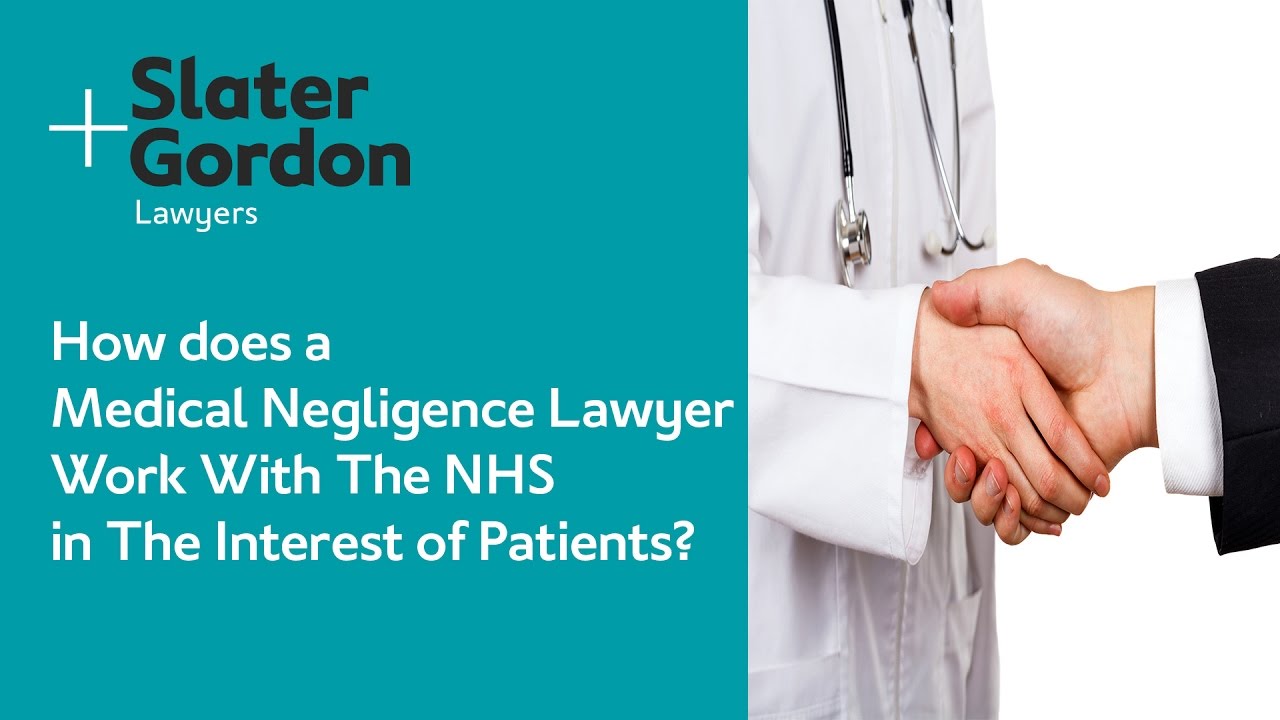
Medical Negligence Law Basics

Medical negligence, also known as medical malpractice, occurs when a healthcare professional or medical institution breaches their duty of care to a patient, resulting in harm or injury. To establish a medical negligence claim, several elements must be proven.
Elements of a Medical Negligence Claim
- Duty of Care: The healthcare professional or institution had a legal obligation to provide a reasonable standard of care to the patient.
- Breach of Duty: The healthcare professional or institution failed to meet the required standard of care, leading to the patient’s injury.
- Causation: The breach of duty directly caused the patient’s injury or harm.
- Damages: The patient suffered compensable damages, such as physical pain, emotional distress, or financial loss.
Common Types of Medical Negligence
Medical negligence can manifest in various forms, including:
- Diagnostic Errors: Incorrect or delayed diagnosis leading to improper treatment or worsened condition.
- Surgical Errors: Mistakes made during surgery, such as operating on the wrong body part or leaving foreign objects inside the patient.
- Medication Errors: Prescribing or administering incorrect medications, dosages, or routes of administration.
- Birth Injuries: Negligence during childbirth resulting in injuries to the mother or baby.
- Nursing Negligence: Failure to provide proper care or monitor patients, leading to bedsores, falls, or infections.
Establishing Liability in Medical Negligence Cases
In medical negligence cases, the burden of proof lies with the plaintiff, who must demonstrate that the healthcare provider breached their duty of care and caused harm to the patient.
The standard of care refers to the level of skill and prudence expected of a healthcare professional in a similar situation. This standard is determined by considering factors such as the provider’s training, experience, and the prevailing medical practices in the community.
Expert witnesses play a crucial role in establishing liability by providing testimony regarding the standard of care and whether the defendant deviated from it. These experts are typically licensed healthcare professionals with specialized knowledge in the relevant field.
Damages in Medical Negligence Cases
In medical negligence cases, the injured party may be entitled to recover damages for the harm caused by the negligent medical care. Damages can be divided into two main categories: economic and non-economic.
Economic Damages
Economic damages compensate the injured party for financial losses resulting from the medical negligence. These damages can include:
* Medical expenses (past and future)
* Lost income (past and future)
* Loss of earning capacity
* Loss of benefits
* Property damage
Calculating economic damages involves gathering evidence of actual expenses and losses. Medical records, pay stubs, tax returns, and expert testimony may be used to support the claim for economic damages.
Non-Economic Damages
Non-economic damages compensate the injured party for intangible losses, such as:
* Pain and suffering
* Emotional distress
* Loss of enjoyment of life
* Loss of consortium
* Disfigurement
* Loss of reputation
Assessing non-economic damages is more subjective than calculating economic damages. The amount of non-economic damages awarded is typically based on the severity of the injury, the impact on the injured party’s life, and the conduct of the negligent party.
Defenses to Medical Negligence Claims

Medical negligence claims can be complex and challenging to defend against. Healthcare providers have a number of defenses at their disposal, and it is important for plaintiffs to be aware of these defenses in order to effectively prosecute their claims.
Common Defenses
- Lack of duty of care: The healthcare provider may argue that they did not owe a duty of care to the plaintiff. This defense is often raised in cases where the plaintiff was not a patient of the healthcare provider or where the healthcare provider was not providing care at the time of the alleged negligence.
- Breach of duty of care: The healthcare provider may argue that they did not breach their duty of care to the plaintiff. This defense is often raised in cases where the healthcare provider claims that they followed the appropriate standard of care or that the plaintiff’s injuries were not caused by their negligence.
- Contributory negligence: The healthcare provider may argue that the plaintiff’s own negligence contributed to their injuries. This defense is often raised in cases where the plaintiff failed to follow the healthcare provider’s instructions or where the plaintiff’s own actions caused or exacerbated their injuries.
- Assumption of risk: The healthcare provider may argue that the plaintiff assumed the risk of their injuries. This defense is often raised in cases where the plaintiff was aware of the risks of the procedure or treatment and consented to it.
- Statute of limitations: The healthcare provider may argue that the plaintiff’s claim is barred by the statute of limitations. This defense is often raised in cases where the plaintiff did not file their claim within the time period specified by law.
Overcoming Defenses
Plaintiffs can overcome these defenses by presenting evidence to show that:
- The healthcare provider did owe a duty of care to the plaintiff.
- The healthcare provider breached their duty of care to the plaintiff.
- The plaintiff’s injuries were caused by the healthcare provider’s negligence.
- The plaintiff did not contribute to their own injuries.
- The plaintiff did not assume the risk of their injuries.
- The plaintiff’s claim is not barred by the statute of limitations.
It is important to note that these defenses are not absolute. In many cases, plaintiffs can overcome these defenses by presenting strong evidence to support their claims.
Legal Process in Medical Negligence Cases

Medical negligence cases involve a complex legal process that can be daunting for victims and their families. Understanding the steps involved can help you navigate the system and seek justice for the harm you have suffered.
Filing a Medical Negligence Claim
The first step in pursuing a medical negligence claim is to file a complaint with the court. The complaint Artikels the facts of your case, including the alleged negligence, the injuries you sustained, and the damages you are seeking.
The Role of the Court System
The court system plays a crucial role in resolving medical negligence cases. The judge or jury will determine whether the defendant (the doctor, hospital, or other healthcare provider) breached their duty of care to you and whether that breach caused your injuries.
Settlement and Trial
Most medical negligence cases are resolved through settlement, which is an agreement between the parties to end the case without going to trial. However, if a settlement cannot be reached, the case will proceed to trial, where a judge or jury will decide the outcome.
Ethical Considerations in Medical Negligence Cases
Medical negligence cases involve ethical obligations and considerations for both healthcare providers and attorneys.
Ethical Obligations of Healthcare Providers
Healthcare professionals have a duty to provide competent and ethical care, adhering to established standards of practice. They must prioritize patient well-being, maintain confidentiality, and avoid conflicts of interest.
Ethical Considerations for Attorneys
Attorneys representing clients in medical negligence cases must balance their clients’ interests with ethical obligations. They have a duty to zealously advocate for their clients while upholding the integrity of the legal system and respecting the rights of healthcare providers.
Patient Confidentiality
Patient confidentiality is a cornerstone of the doctor-patient relationship. Healthcare providers have a legal and ethical obligation to protect patient information. In medical negligence cases, attorneys must carefully consider the potential breach of confidentiality when gathering evidence and communicating with clients.
Current Trends in Medical Negligence Law
Medical negligence law is constantly evolving, with new trends emerging all the time. Some of the most notable current trends include the increasing use of technology in medical malpractice cases, the growing role of patient advocacy groups, and the changing legal landscape surrounding medical negligence claims.
Technology is playing an increasingly important role in medical negligence cases. Electronic health records (EHRs) and other digital data can provide valuable evidence in medical malpractice cases, helping to establish liability and damages. Additionally, telemedicine and other remote healthcare technologies are becoming more common, which is raising new legal issues related to medical negligence.
Impact of Technology on Medical Negligence Cases
- Electronic health records (EHRs) and other digital data can provide valuable evidence in medical malpractice cases, helping to establish liability and damages.
- Telemedicine and other remote healthcare technologies are becoming more common, which is raising new legal issues related to medical negligence.
Patient advocacy groups are also playing a growing role in shaping medical negligence law. These groups provide support and resources to victims of medical negligence, and they often lobby for changes to the law that would make it easier for victims to obtain compensation.
Role of Patient Advocacy Groups
- Patient advocacy groups provide support and resources to victims of medical negligence.
- These groups often lobby for changes to the law that would make it easier for victims to obtain compensation.
The legal landscape surrounding medical negligence claims is also changing. In recent years, there has been a trend towards limiting the liability of healthcare providers. This trend is likely to continue in the future, as healthcare costs continue to rise.





